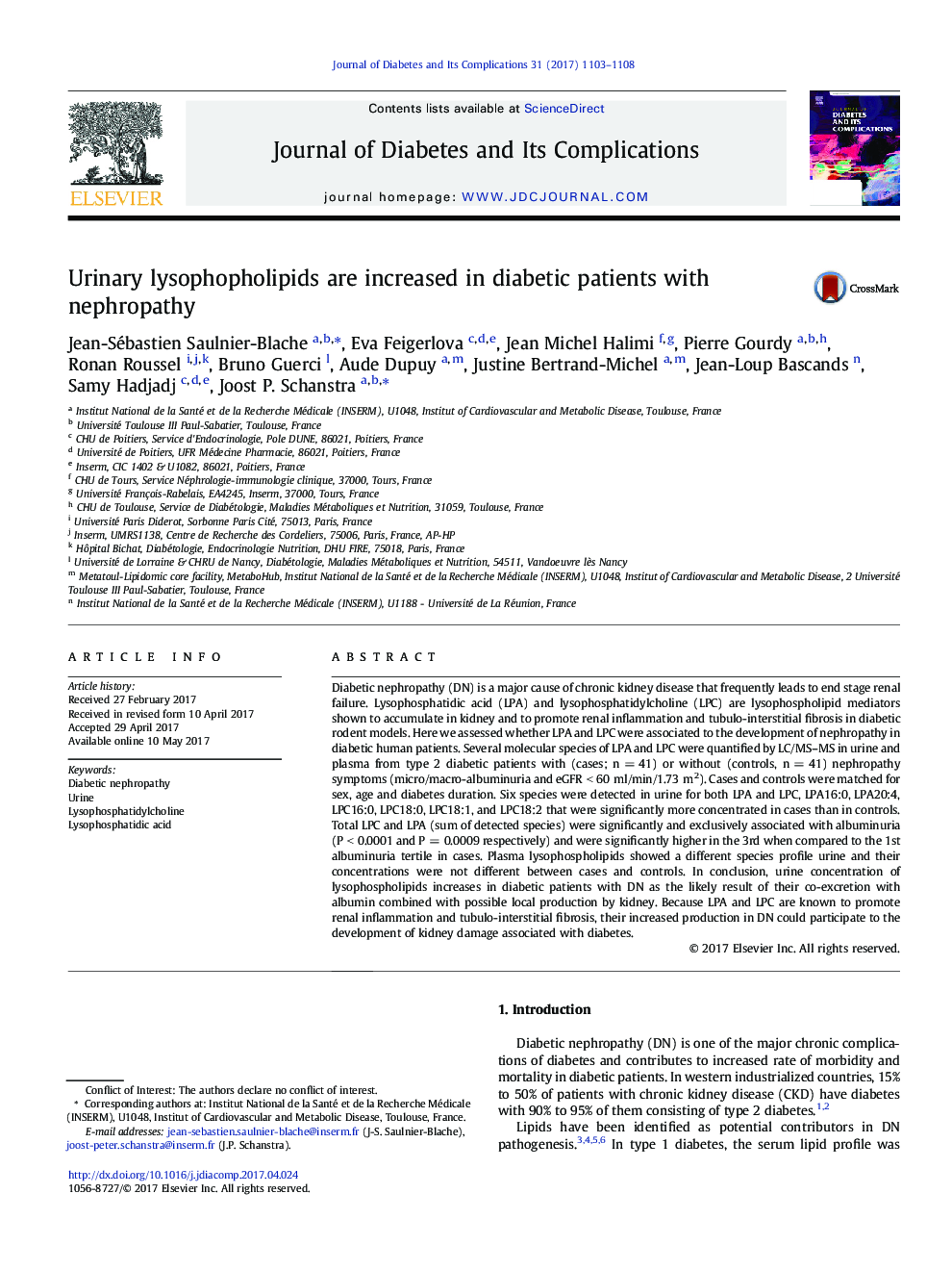| Article ID | Journal | Published Year | Pages | File Type |
|---|---|---|---|---|
| 5588033 | Journal of Diabetes and its Complications | 2017 | 6 Pages |
â¢Diabetic nephropathy (DN) is a major cause of chronic kidney disease that frequently leads to end stage renal failure. Lysophosphatidic acid (LPA) and lysophosphatidylcholine (LPC) are lysophospholipid mediators that accumulate in kidney and promote renal inflammation and tubulo-interstitial fibrosis in diabetic rodent models. Here we assessed whether LPA and LPC were associated to the development of nephropathy in diabetic human patients.â¢We found that urine concentration of lysophospholipids increases in diabetic patients with DN as the likely result of their co-excretion with albumin combined with a possible local production by kidney. Because LPA and LPC are known to promote renal inflammation and tubulo-interstitial fibrosis, their increased production in DN could participate to the development of kidney damage associated with diabetes.
Diabetic nephropathy (DN) is a major cause of chronic kidney disease that frequently leads to end stage renal failure. Lysophosphatidic acid (LPA) and lysophosphatidylcholine (LPC) are lysophospholipid mediators shown to accumulate in kidney and to promote renal inflammation and tubulo-interstitial fibrosis in diabetic rodent models. Here we assessed whether LPA and LPC were associated to the development of nephropathy in diabetic human patients. Several molecular species of LPA and LPC were quantified by LC/MS-MS in urine and plasma from type 2 diabetic patients with (cases; n = 41) or without (controls, n = 41) nephropathy symptoms (micro/macro-albuminuria and eGFR < 60 ml/min/1.73 m2). Cases and controls were matched for sex, age and diabetes duration. Six species were detected in urine for both LPA and LPC, LPA16:0, LPA20:4, LPC16:0, LPC18:0, LPC18:1, and LPC18:2 that were significantly more concentrated in cases than in controls. Total LPC and LPA (sum of detected species) were significantly and exclusively associated with albuminuria (P < 0.0001 and P = 0.0009 respectively) and were significantly higher in the 3rd when compared to the 1st albuminuria tertile in cases. Plasma lysophospholipids showed a different species profile urine and their concentrations were not different between cases and controls. In conclusion, urine concentration of lysophospholipids increases in diabetic patients with DN as the likely result of their co-excretion with albumin combined with possible local production by kidney. Because LPA and LPC are known to promote renal inflammation and tubulo-interstitial fibrosis, their increased production in DN could participate to the development of kidney damage associated with diabetes.
